The comics vet has a new memoir coming. Dig these 13 personal faves…
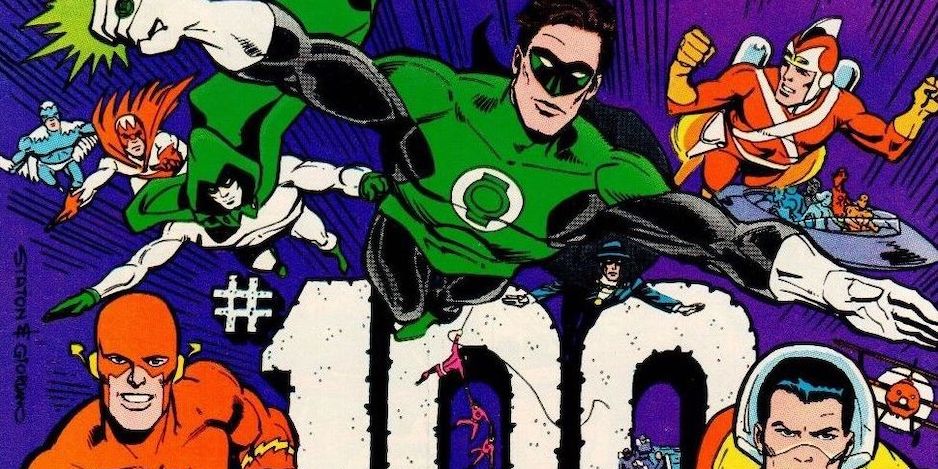
Writer Paul Kupperberg has been in the comics biz for 45 years, give or take, and he’s got stories to tell — about his times at DC, Charlton, Archie, you name it. Well, you can get your hands on them in the forthcoming I Never Write for the Money… But I Always Turn in the Manuscript for a Check, which has already been funded on Kickstarter.
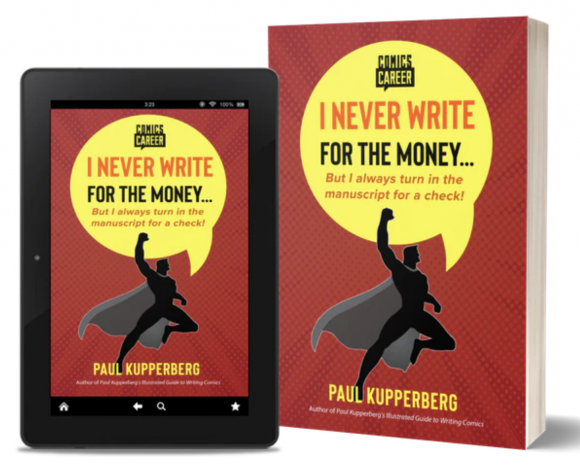
“This new book is the second volume of the The Comics Career Library, a series of books specifically crafted for comics creators,” reads the Kickstarter pitch. “It joins Tales From the Titans, the very best of Comics Career interviews, which is also available in many of the reward packages.”
Tales From the Titans, by Comics Career’s Kirk Chritton, includes interviews with Dick Giordano, Dave McKean, Derf Backderf and many more. Meanwhile, Kupperberg’s book is “part writers’ guide, part memoir, part comedy, and all gripping” and you can click here to dive into the details.
With the campaign in its stretch drive, Paul agreed to give us a specific look at his highly prolific career, compiling a list of the 13 fave comics he’s written.
It’s good stuff. Dig it.
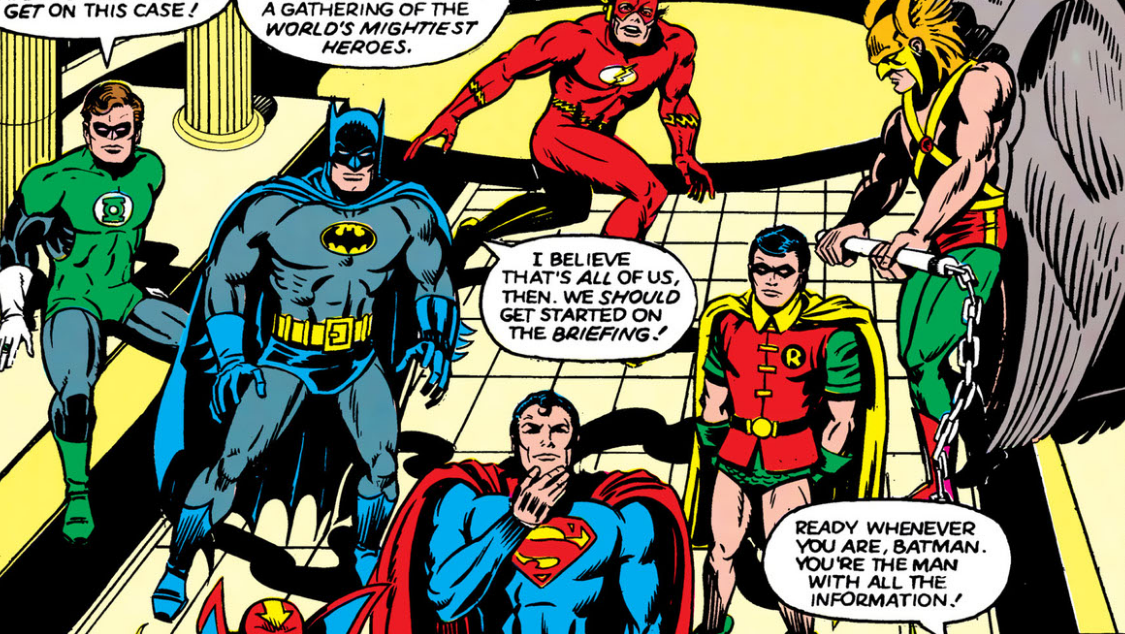
By PAUL KUPPERBERG
Instead of having me blather on about my new book (I Never Write for the Money… But I Always Turn in the Manuscript for a Check from Comics Career, now headed towards its second stretch goal on Kickstarter), Dan Greenfield challenged me instead to come up with a list of MY 13 FAVORITE COMIC BOOKS I’VE WRITTEN.
Even with something like 1,400 of them to my credit, I was a little worried about finding a baker’s dozen of my own that didn’t, for some reason or another, make me cringe. As it turned out, and much to my relief, I realized I wasn’t picking my 13 best stories (because that’s something for readers to decide); I was choosing my 13 favorites. They didn’t even have to be the good ones! That I can do, so here, in chronological order, are MY 13 FAVORITE COMIC BOOK STORIES I’VE WRITTEN:
—
13. Scary Tales #3, Charlton, Dec. 1975: Distress! Because a boy never forgets his first time…! This was my first professional sale, to assistant Nicola Cuti at Charlton Comics. It was a fairly standard mid-1970s Comics Code-approved horror story, or what we called “mystery” stories because the Code didn’t allow “horror,” about a Medieval knight who gets tricked into a Twilight Zone ironic ending when the maiden in “Distress” he’s sent to save turns out to be a vampiress who likes to play with her food.

Charlton Comics was actually a pretty fertile breeding ground for up-and-coming 1970s comic creators. They didn’t pay well but they allowed a lot of creative freedom, which is why higher profile artists like Steve Ditko, Tom Sutton, Pat Boyette and a few others stuck around. The rest were the newbies, who only stuck around long enough to get some experience and credits before moving on to DC and Marvel, including John Byrne, Joe Staton, Don Newton and the artist of my story, Michael Zeck.
—
12. Showcase #100, DC Comics, May 1978: There Shall Come a Gathering! As a fan growing up in the 1960s, one of my favorite titles was DC’s Showcase, the try-out comic that helped give birth to the Silver Age of Comics, beginning with the introduction of the Barry Allen Flash in 1956’s Showcase #4, which was followed by try-out issues for Lois Lane (in her solo title), Challengers of the Unknown, Space Ranger, Adam Strange, Rip Hunter–Time Master, Green Lantern, Sea Devils, Aquaman, and the Atom… and that was just in its first five or six years.
Showcase was canceled in 1970 and revived in 1977, picking up the old numbering and giving me the opportunity to finally become a contributor to the title with the revival of the new Doom Patrol (#94 – 97) by me and Joe Staton. Paul Levitz and Staton did the second three-issue arc (featuring Power Girl), and then the three of us were handed the assignment of writing the double-sized Showcase #100 featuring… everybody!
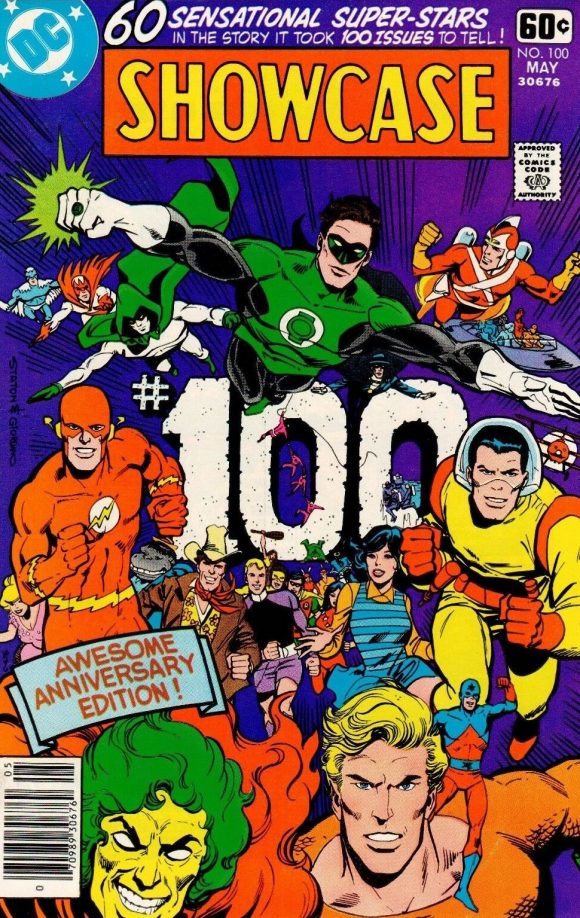
I’ve since started referring to Showcase #100 as Crisis on Infinite Earths done in one, and nobody died! The original conceit was to do an epic 34-page story featuring every character that had ever appeared in Showcase and then graduated to their own title or feature. In order to achieve that, we had to start crunching up time and space to accommodate all the characters from various eras and came up with a plot that gave the illusion of a story but was, in fact, just an excuse to go nuts. Joe took it even a step further, deciding on his own to throw in every character that had ever appeared in Showcase. How can anyone not love that?
—
11. Crazy Magazine #68, Marvel Comics, Nov. 1980: American Giggler! For several years in the early-1980s, I was the regular writer of the movie parodies in Marvel’s Crazy Magazine, one of the better Mad Magazine imitators, for editor Larry Hama. I’d grown up on Mad Magazine and read every issue, thanks to an older cousin who gave us his collection going back to the first issue as a magazine, but for me, the epitome of comic book humor was its first 23 issues as a 10¢ color comic book under editor/cartoonist Will Elder.
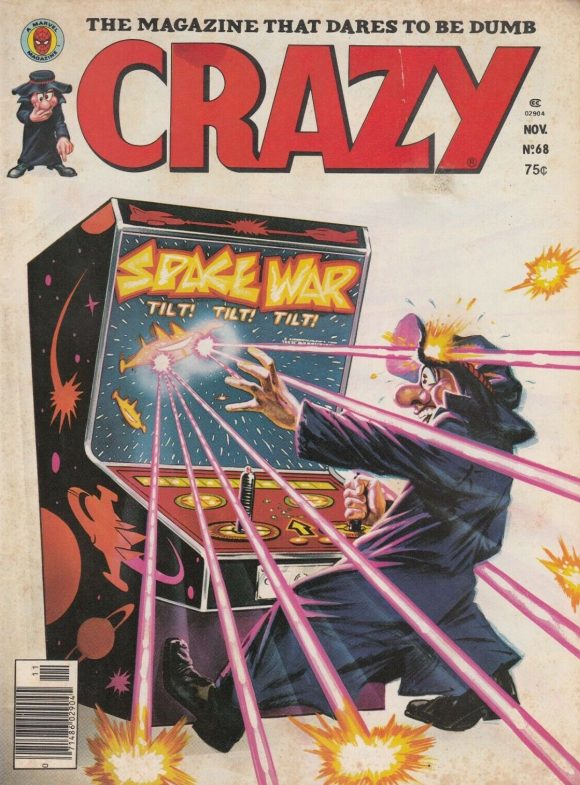
He imbued the Mad parodies of comic books, comic strips, movies, television, and pop culture with so much frantic activity and background gags, or “schmaltz” — what’s called “Easter eggs” now — that you couldn’t catch your breath.
It would be fair to say I didn’t so much take inspiration from those early Mad comics as I did lift bits and gags from them. American Giggler, a parody of the 1980 Richard Gere movie American Gigolo, drawn by Gary Hallgren, was where my overenthusiastic taking of “inspiration” from Will Elder came to a head, to the point where I probably should split the payment with him.
—
10. Green Lantern #148, DC Comics, Feb. 1982: Tales of the Green Lantern Corps! One word: Ch’p — the chipmunk Green Lantern from the planet H’vlen. Green Lantern used to run a back-up feature called Tales of the Green Lantern Corps, eight-pagers about some of the other 3,599 members of the Corps. This was the first of about a dozen TOTGLC stories that I wrote, several of which were drawn by the talented Don Newton, including this one (which was inked by Dan Adkins), as well as a second Ch’p story a couple of years later in Green Lantern #182.
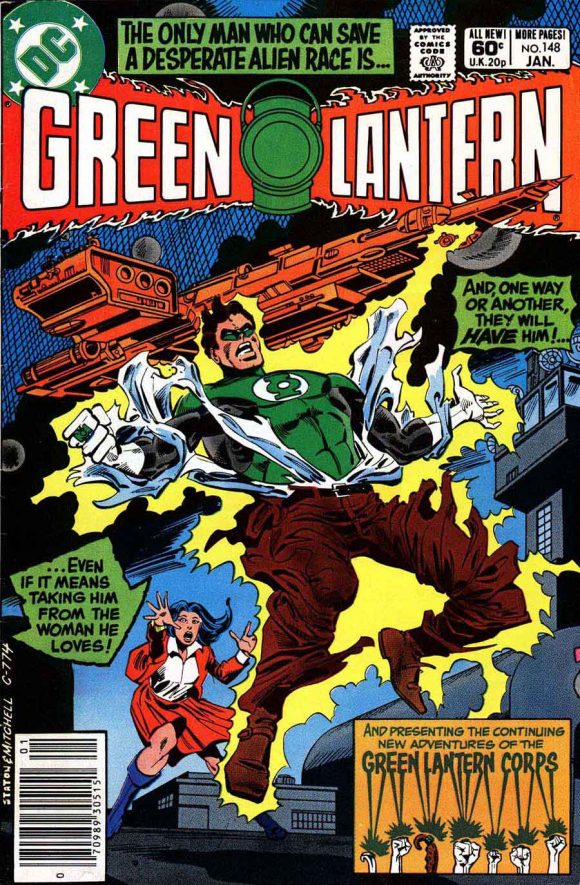
I guess Don drew him more squirrel than chipmunk, but whatever the species, he delivered on the gag: the idea of a cute little furry thing with the face of a plush toy and the heart of a warrior. Nobility with adorwable wittle twitching whiskers. I hated what subsequent creators did to Ch’p, turning him into an animated cartoon character cliché, but at least we’ve still got Don’s original take on him (scans of Xeroxes of Don’s story for #182 are posted here), and I also worked him into 1985’s Tales of the Green Lantern Corps Annual #1 so he could be drawn by the Green Lantern artist, Gil Kane.
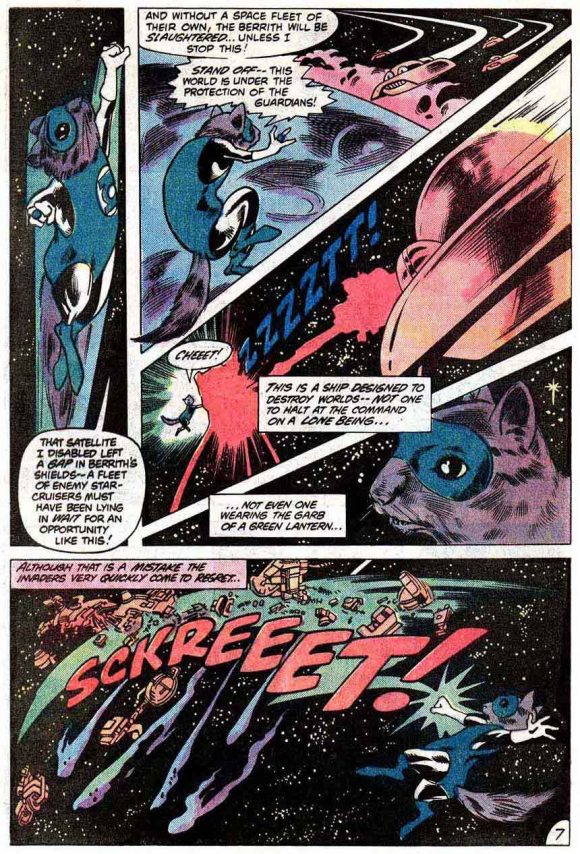
—
9. DC Comics Presents #65, DC Comics, Jan. 1984: Slayer from the Dark Dimension! Sometimes you just get lucky and write a script that not only don’t you think sucks but actually believe is good. Real good. (Your opinion may vary.) That was the case with Slayer from the Dark Dimension! When I went in to pitch the Superman/Madame Xanadu team-up for DC Comics Presents to editor Julie Schwartz, he did something very unusual for our plotting sessions: He didn’t interrupt me with suggestions or plot course corrections. And when I was done, he just looked at me for a few seconds and said, “I’m not sure I get it, but go ahead. I trust you.” Dramatic Schwartzian pause. “Don’t screw it up.”
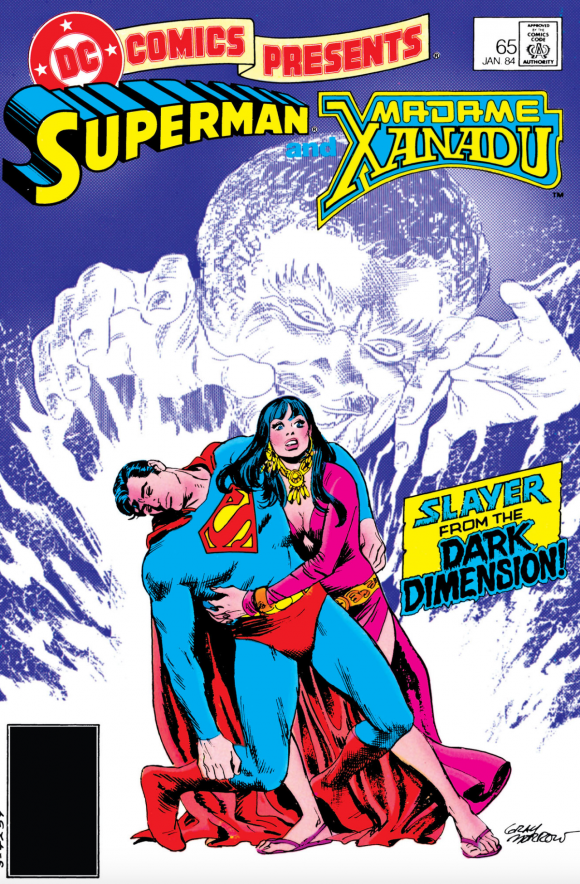
That was high praise from Julie, and I like to think I didn’t screw it up, at least in his eyes. He never said one way or another (that wasn’t his style; when I once asked him if a story was OK, he told me, “Don’t worry. You’ll hear about it when it isn’t OK!”) but he did assign the script to the (yes, I’m going to use the word) legendary Gray Morrow. Gray’s very human, down-to-earth style wasn’t really suited for your typical bombastic, Kirbyesque superhero story, but Slayer from a Dark Dimension! had a very emotional, psychological edge to it. Making Superman look like what Superman would look like if he existed in the real world only heightened the effect.
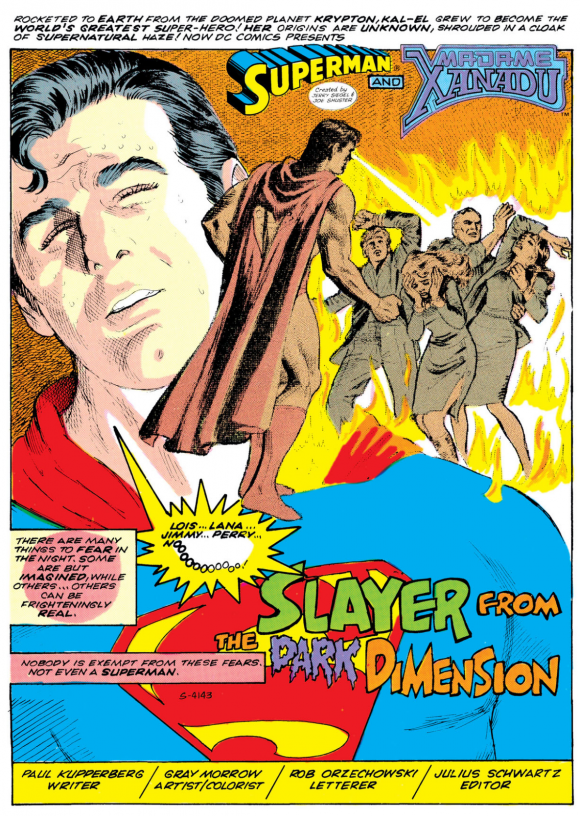
—
8. Super Powers #1, DC Comics, Sept. 1985: Seeds of Doom! Yes, it was a comic book miniseries based on a toy line. But a toy line designed by Jack Kirby who, oh yeah, just happened to draw the comic book about the toys he designed… which was being written by me! There had been a Kirby-penciled Super Powers miniseries, written by Joey Cavalieri, the previous year, but when I got the assignment to write the 1985 series, the artist was still to be determined. I didn’t find out who had drawn it until I walked into editor Andy Helfer’s office to deliver the script for a later issue and he casually flipped the boards across the desk to me. “Pencils for #1 came in. They look good,” he understated, as only Helfer can. Fortunately, I was able to keep my exploding brain from splattering the pages.

As amazing as it was to work on a project with Jack (and I believe this was the last regular, monthly title he worked on), there was another aspect of Super Powers that puts it up there among my favorites: It was, one fill-in issue aside, the closest I ever came to getting to write the Justice League of America, another of my childhood favorites, under Gardner Fox and Mike Sekowsky. I structured the stories like the old JLA stories (which were in turn based on the structure of the Golden Age Justice Society of America stories) and had a great time. I mean, Jack Kirby, the Justice League, and me. What’s not to love?
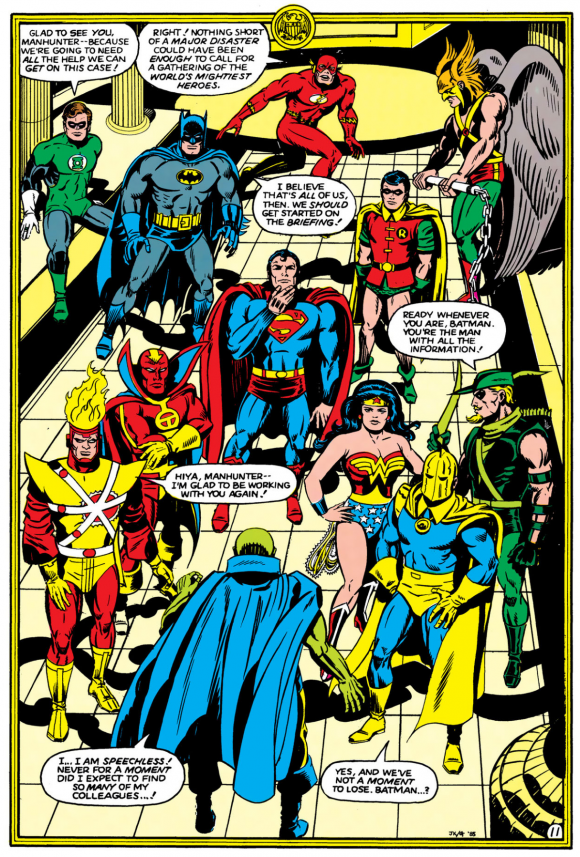
—
7. The Phantom Stranger #1, DC Comics, Oct. 1987: The Heart of a Stranger! The first issue of the four-issue Phantom Stranger miniseries was another one of those scripts I felt I’d nailed, right out of the gate. Well, the second time. The first time it was written was the first time I was using my brand-new Apple Macintosh II, and I lost the first 13 or 14 original draft pages to some glitch (i.e. operator error) and had to start from scratch. Just as well, because I don’t remember being particularly happy with the first go. It was the story of the Stranger’s redemption after being stripped of his powers by the Lords of Order and having to live among the people he once watched over. Yadda yadda yadda and Eclipso is trying to destroy the world.
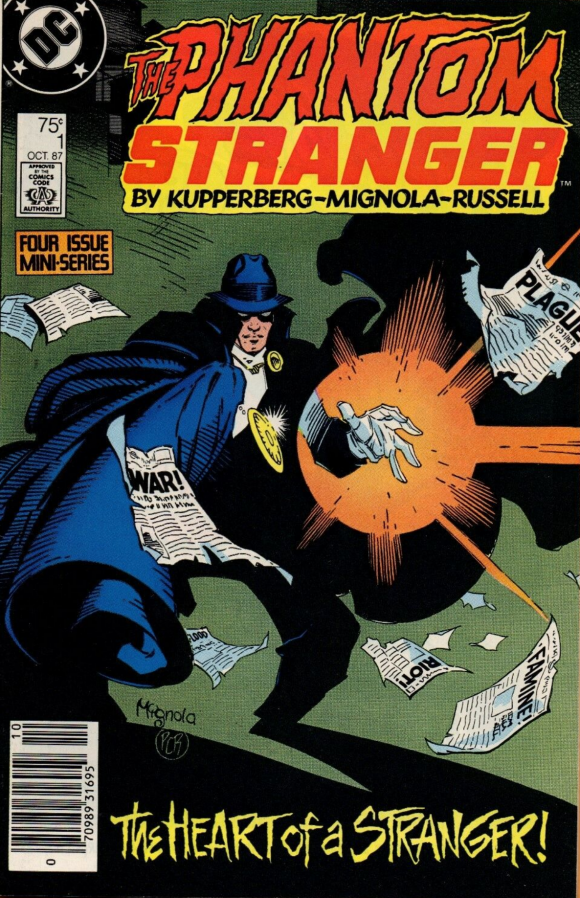
I’m proud of all four issues of this miniseries. I wrote the first comic book limited/miniseries in 1979, The World of Krypton, which was a biography of Superman’s father Jor-El, or more accurately, a string of canonical characters and events in the life of Jor-El compiled by E. Nelson Bridwell and turned into a narrative leading to the inevitable conclusion. The Phantom Stranger was a satisfying, well-constructed, well-told story (yeah, I sez so!), and if that ice cream sundae needed a cherry on top, it was drawn by the unbeatable team of Mike Mignola and P. Craig Russell.
—
6. Vigilante #50, DC Comics, Feb. 1988: A Life! This was a slow slog toward death, but man, was it fun! I had taken over writing Vigilante from creator Marv Wolfman with #19, after an earlier fill-in, inheriting a sorta is/sorta isn’t version of Marvel’s Punisher and playing on the fringes of the DC superhero universe.
After a few issues, when I’d got my feet wet with the character, I wanted to get away from the presence of costumed, especially superpowered, heroes and villains. I didn’t see Adrian Chase, the criminal court judge who put on a costume at night to kill the criminals who escaped justice through loopholes in the law, as a hero. He was insane. He’d have to be just to conceive the idea. And I’m this leftie who doesn’t even believe that the government has the right to impose the death penalty, much less some head-job in ski goggles and a black onesie, writing this right-wing wet dream of a character.
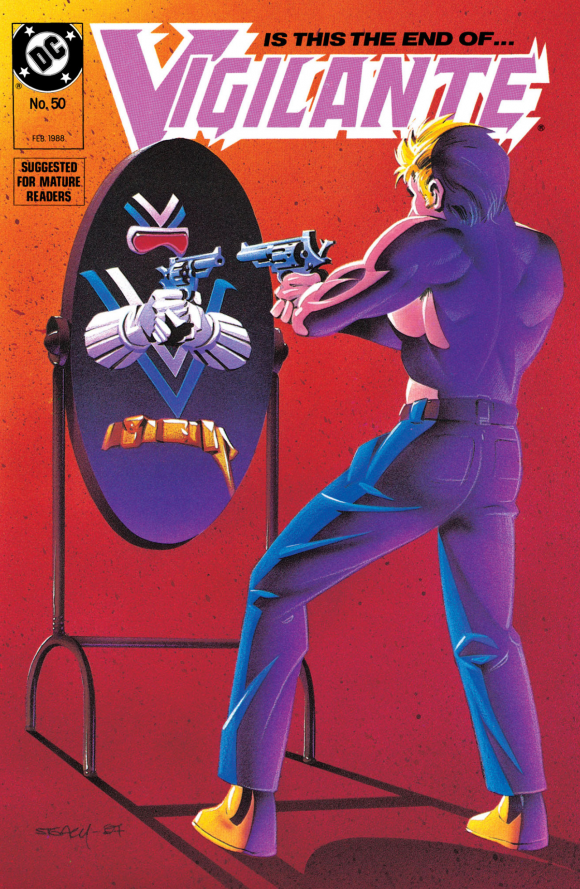
Everything is political, even comic books, but especially ones that go where Vigilante went, the dark places, into sick minds, where grown-ups hurt children, where men think it’s their right to dominate women… and where a head-job in ski goggles and a black onesie goes around killing people according to own code of justice.
When you look back on my run of Vigilante, you see his death was inevitable, at least as far back as #37, when he killed a police officer. Even though it was accidental, there was no turning back from that, and the rest of the run was that slow slog to the end. It was a challenging story to write, but I’m proud of the fact that of all the DC comic book character deaths, Adrian Chase’s is the one that’s never been reversed or negated.
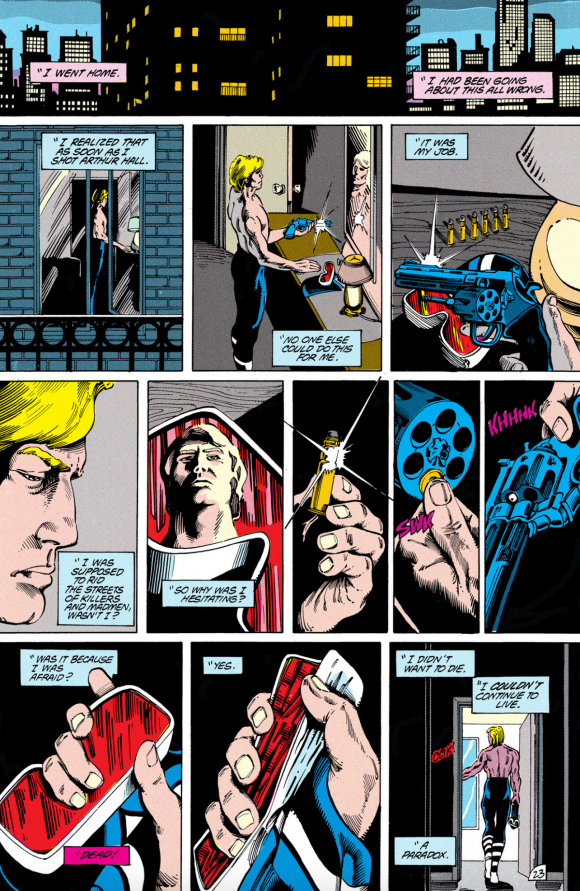
—
5. Action Comics #641, DC Comics, March 1989: Tommy’s Monster! After the Phantom Stranger miniseries, DC gave the character a regular rotating slot in the failed experiment that was Action Comics Weekly. I was still the Stranger’s writer of record, so I wrote eight or nine eight-pagers, stories that were drawn by an amazing array of artists, including Kyle Baker, Joe Orlando, Tom Grindberg, Fred Carrillo, Andy Kubert, and Jose Luis Garcia-Lopez, who drew two stories, The Devil Was a Baby in ACW #623, and Tommy’s Monster!
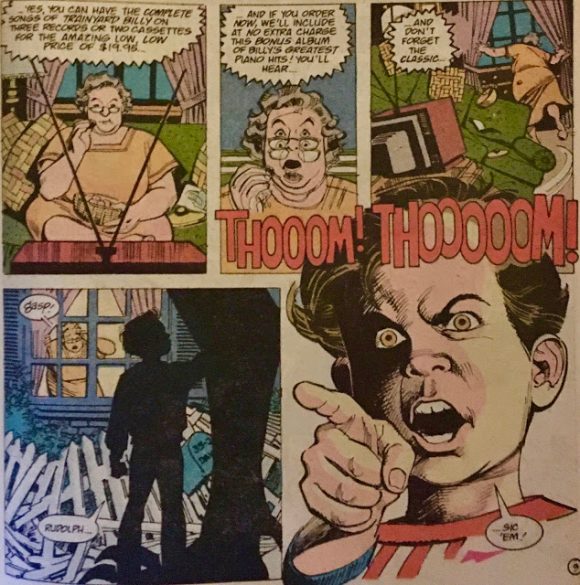
It’s tough to pick a favorite of these back-ups — I was still on a roll with the character (yeah, sez me again!) — but Tommy’s Monster! wins by a nose. It’s an unabashed homage to one of my earliest comedy influences, the absurdist humor writer, Jack Douglas (also TV writer and producer, TV personality; Google him), taking off on his story The Boy Who Cried Dinosaur from his short story collection, My Brother Was an Only Child (Dutton, 1959). It’s the story of little Johnny Lauderbinn who finds a Brontosaurus and trains it with peanuts to obey his commands, including stomping on anyone who doesn’t believe he’s really got a dinosaur. The fact that Jose Luis Garcia-Lopez draws the living crap out of it helps a lot too.
—
4. Scooby-Doo #143, DC Comics, June 2009: Sunday in the Park with Scooby! I wrote quite a bit of Cartoon Network comic books for DC in the ’90s and ’00s, and Scooby-Doo was usually the most fun to write. It was formulaic as all hell (“I would have gotten away with it if it wasn’t for you darn kids… and your meddling dog!”), but the characters are solid and fun to write, with a lot of potential for good gags. And again, formula: The Gang is invited to investigate or stumble across some mystery, usually supernatural in nature, they investigate, Scooby and Shaggy (usually) stumble across the big clue, and, wait… it’s just a guy in a rubber mask! But Sunday in the Park with Scooby! was one of those rare occasions when I could sneak a non-formulaic story past the Warner Bros. brand overseers.
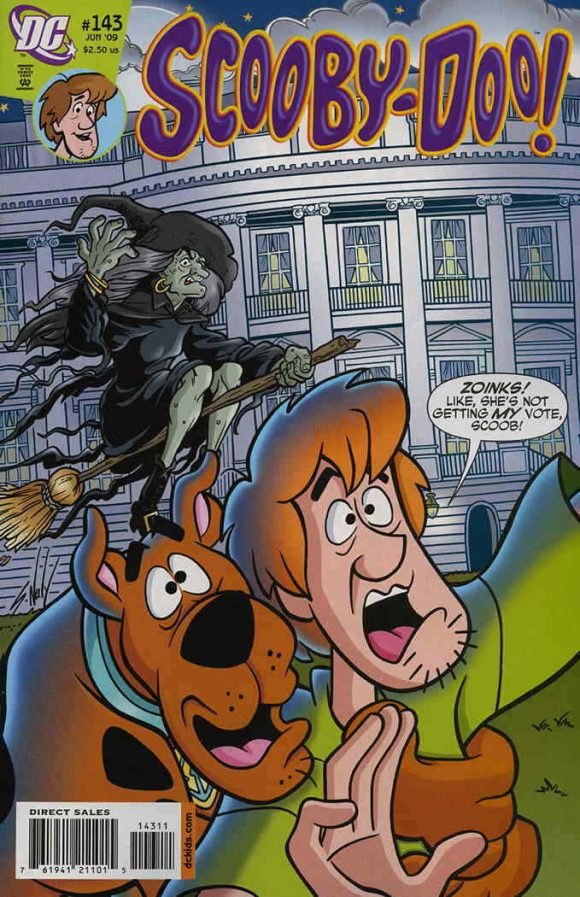
The title says it all; Shaggy and Scooby off on their own for a Sunday in the park. All they have in mind is to eat their way through all the pushcart foods but manage to wander across and solve several little “mysteries” — a lost baseball for some kids, a toddler who wandered off, etc. — all without missing a bite. Then they set off a chain of events that ends up in the capture of a crook disguised as a food vendor, totally unaware that they’d solved another mystery. It’s beautifully drawn by Fabio Laguna, who’s right up there with my other favorite Scooby collaborator, Joe Staton.
—
3. Jughead Double Digest #172, Sept. 2011: Treasure Hunt! While published after my No. 2 choice, I wrote Treasure Hunt! even before I’d gotten the assignment to write Life With Archie. But it does come first in the chronology of my writing the Archie characters, which I’d only started doing in 2007, and which I’ve been reading my entire life. I had hundreds of Archies in my collection when I was 10 through 13 or 14 years old, and I continued dipping into the comics thereafter. My first sales to Archie editor Victor Gorelick were mostly the usual six, eight, or 10-page teenage Archie stories, mostly for their Digest line, as the new story to front the reprints.
Treasure Hunt! was the story I wrote that convinced me that reading all those thousands of Archies across five decades hadn’t been for nothing, that I had a firm handle on these characters. The story involves the discovery of a treasure map in Jughead’s attic that sets the gang to digging up the yard in search of John Dillinger’s buried treasure. Jughead thinks the map is a fake, but he lets them dig anyway while he (and Veronica) sit back and watch. Spoiler: there is no treasure. Jughead planted the map for them to find so the gang would dig up the backyard for the new septic system without his having to lift a finger.
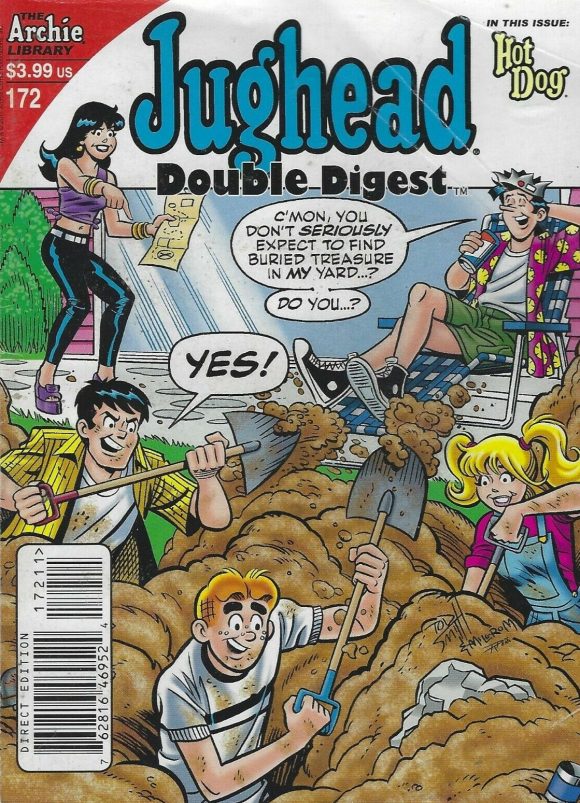
The moment I figured out Jughead was the smartest kid in Riverdale (Dilbert’s smart in a different way), the whole world fell into place for me. Also, awesome art by old Vigilante cohort Tod Smith and the legendary (there’s that word again!) Terry Austin.
—
2. Life With Archie #6, Archie Comics, Feb. 2011: Farewell and Get Out the Vote! Life With Archie was the monthly magazine featuring the two divergent storylines of Archie Marries Betty and Archie Marries Veronica (originally intended to be separate, standard format comics before they went magazine size). When the idea, created by Michael Uslan and Stan Goldberg for the “miniseries within a series” in Archie #600 – 606, of continuing the post-college, young adult lives of Archie and his either/or wives as a series, Michael wasn’t available for the ongoing gig… something about being too busy producing high-grossing superhero blockbusters or something. Anyway, he wrote the stories in the first issue and then the series was handed off to me, with art on both stories by Norm Breyfogle and inks by Andrew Pepoy and Josef Rubinstein.
I don’t know why I was chosen for the assignment. I know I’d demonstrated my understanding of the characters in the teen-Archie stories I’d written. Maybe that, combined with my experience writing long form serialized comic fiction, put me over the top. Whatever it was, I’m grateful to Michael, Victor, and publisher Jon Goldwater for the job. I think I did some of the best work of my career on the series overall (yeah, that’d me sezin’ it again), and there are any number of individual stories from the run that I’m very proud of, especially #36’s Death of Archie.
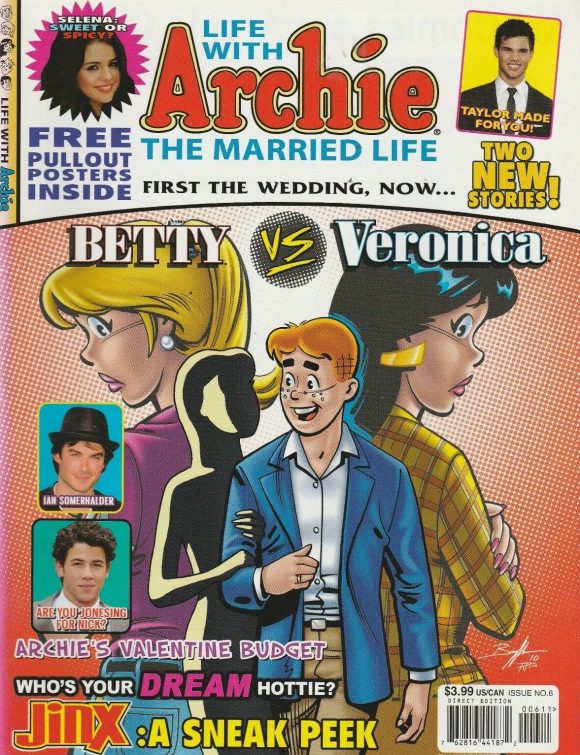
But LWA #6 was the end of the series’ first story arc, and it took me that long to start to feel that I’d finally made this series, which I hadn’t developed or launch, my own. In the Archie Marries Betty storyline, we’re saying “Farewell!” to Miss Grundy, who, having finally gotten together and marrying Mr. Weatherbee, dies (off panel) from a fatal disease. I knew I had it when I had to step away from the computer after writing the scene where they find out she’s dead to compose myself.
In the other timeline, “dumb” Moose — who tells the story in the alternate universe where she’s dying of how Miss Grundy was the one who discovered he was dyslexic, not stupid — ends the issue waiting for the results of his race to become mayor of Riverdale. It was full steam ahead after that.
—
1. Paul Kupperberg’s Secret Romances #1, Charlton Neo Comics, 2015: Forget Me Not! They’re not actually my secret romances, but they are my Secret Romances, two issues and a compilation of which have been published by Charlton Neo Comics. The romance genre was still pretty big in the 1960s; DC had several titles, Marvel dabbled with it in runs of Millie the Model and Patsy Walker, and Charlton had a number of titles. By the time I started writing professionally, DC was down to its last romance title and I helped kill that with two stories in its final issue, Young Love #126 (July 1977). It wasn’t until years later, when I was looking to write an alternative to yet another superhero story that I came up with an idea for a romance story. And then another one, and then a bunch more, because once you plug the information into the brain, it keeps coming up with ideas.
Anyway, eight or nine scripts and two or three sample stories later, I had a pitch for a comic called Post-Modern Romance, where “happily ever after isn’t what it used to be.” The editors I’d submitted it to all liked it but couldn’t buy it because, “romance doesn’t sell.” Not that anyone was doing any romance comics to know that, but…!

Flash-forward a couple of years, and I’m doing Charlton Neo Comics with Mort Todd and Roger McKenzie, and I suddenly have a publisher for Post-Modern Romance, which Mort insisted I call Secret Romances, in homage to the Charlton Comics title, and Paul Kupperberg’s because he likes to embarrass me.
Forget Me Not, beautifully drawn by Daerick Gross, is one of the sweetest of the smugly ironic, and in a few cases, twisted tales. Well, bittersweet – it’s about an elderly woman receiving a new gentleman caller with whom she has a great rapport, only to learn after he leaves that they’ve been married for decades but she suffers from Alzheimer’s and can’t remember him from day to day.
—
For more info on Paul Kupperberg’s Kickstarter for I Never Write for the Money… But I Always Turn in the Manuscript for a Check, click here.
—
MORE
— 13 COVERS: CHARLTON Silver Age Classics. Click here.
— ZLONK! ZOK! ZOWIE! The New BATMAN ’66 Guide Is Here. Click here.

September 20, 2020
Awesome article from Mr. Kupperberg. 🙂
September 20, 2020
An awesome selection! I’ve got some catching up and rereading to do.
September 21, 2020
I have never seen that Showcase 100 cover before – pretty nice! I did have that issue of DC Comics Presents, and, too, was impressed with Mr. Morrow’s rendering of Superman. He looked like he could step off the page.
September 21, 2020
That Phantom Stranger mini and the Action Comics Weekly run are among the best Stranger stories period.
June 15, 2022
Wonderful! i remember reading the Showcase 100 and geeking-out! I hadn’t heard of Windy and Willy but I knew who Dobie and Maynard were!
March 4, 2024
The end of “Vigilante” still resonates with me more than 36 years later. Quite a run up to, and including, that unforgettable conclusion.